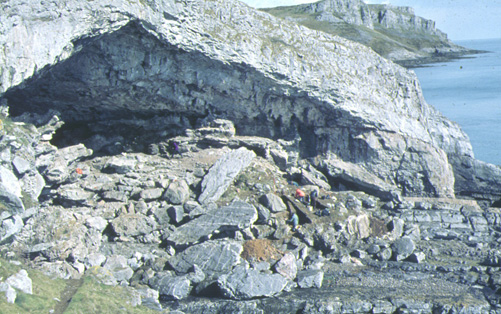
Bacon Hole is a large cave chamber of unknown age developed on a prominent fault in the Carboniferous Limestone cliffs of the south coast of the Gower Peninsula. In common with the nearby sites of Boscos Den and Minchin Hole, Bacon Hole appears to be a terrestrial cave which has been opened up and heavily modified by successive phases of marine erosion during the Middle and Late Pleistocene. A well stratified sequence of deposits formed by both marine and terrestrial processes has yielded a succession of vertebrate assemblages spanning part of the Marine Isotope Stage (MIS) 6 cold stage, much of the MIS 5 interglacial complex (the “Last Interglacial”), and the early stages of MIS 4, the Early Devensian cold stage. This is a key site in linking the record of Later Pleistocene high sea level events to the terrestrial sequence, for establishing the stratigraphic relationship between distinctive mammal assemblages and for providing dating evidence which helps to delimit the timing of the presence of these animal communities in Britain. [APC]
|

